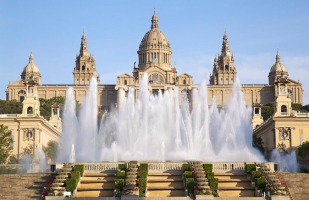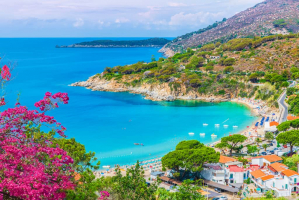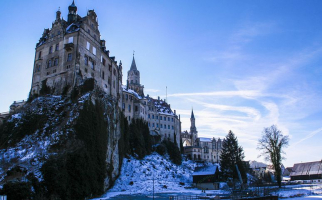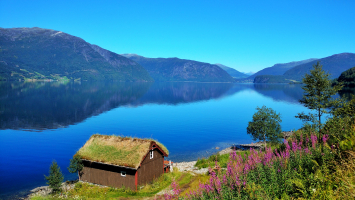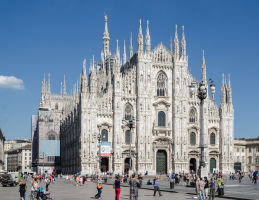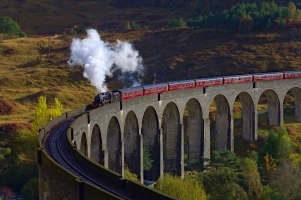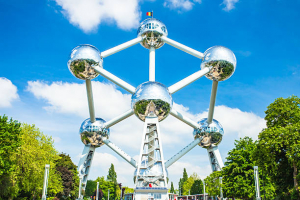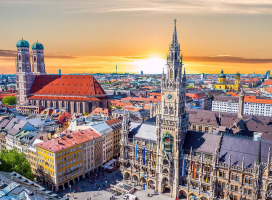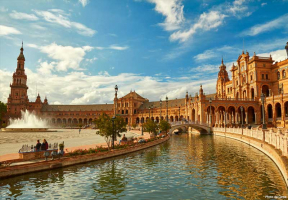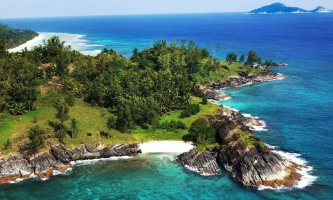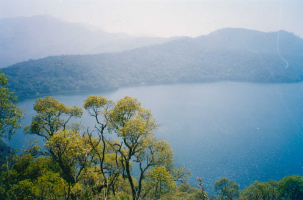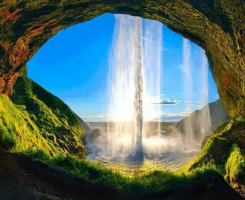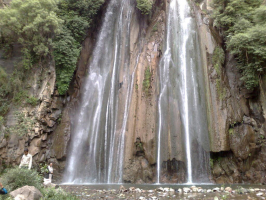Top 12 Most Beautiful Funiculars in Europe
Nothing beats mounting a hill in a funicular: not only do you save your breath, but you're also a part of the city's history. In Europe, funiculars are still ... read more...types of public transit that are mostly utilized by residents and are not widely renowned as tourist attractions. But they should be, because they are frequently a vital part of a city and provide amazing views on the way up or after you reach the top, all while preserving your strength. Let's discover the most beautiful funiculars in Europe.
-
Visiting the lovely yellow Bica Funicular should surely be on your list of things to do in Lisbon while touring the city. The Bica Funicular, also known as the Elevador da Bica, is a funicular train line in Misericórdia, a civil parish in the municipality of Lisbon, Portugal. It links the Rua de So Paulo to the Carris-operated Calçada do Combro/Rua do Loreto. The line follows the funicular system, with two cars permanently coupled to opposite ends of a haulage cable that is looped over a pulley at the track's upper end. Traction is given, unusually, by electric motors on the two carriages, which are powered by an overhead cable. The cable links the two cars together so that they ascend and descend simultaneously, each car acting as a counterweight for the other one.
The funicular system is installed along an axis characterized by an intensified slope on the outskirts of Lisbon's Pombaline downtown neighborhood, overlooking the Tagus River. Its path follows an area dominated by rental houses built in the 18th century. The lift consists of two vehicles that traverse the distance in opposite directions at the same time. The vehicles feature three entrances on each side (each with two flanking windows) and three compartments within the platform, with hardwood chairs positioned transversely from the central body.
The exterior is encased in masonry, with wrought iron gates and a portico with an arch. Upper stories have rectangular windows, with wrought iron varandas on the first and second floors and smaller picture windows on the third. A beautiful cornice separates the upper level from the Mansard roof at the top, with wrought iron railing. The inside has a small atrium with a vehicle circulation corridor, tile wainscoting, plastered walls, and azulejo tile, and the main platform is defined by a wrought iron gate and lateral stairs.
Location: Lisbon, Portugal
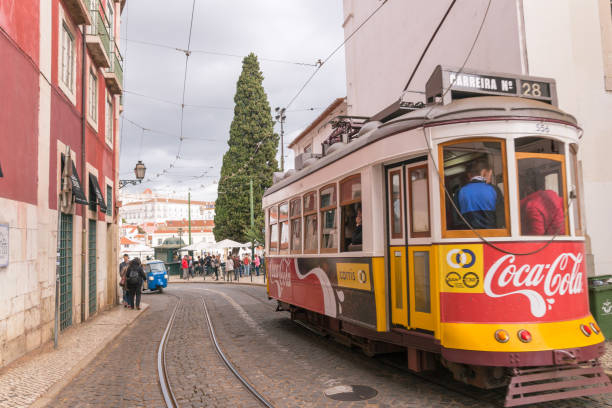
istockphoto 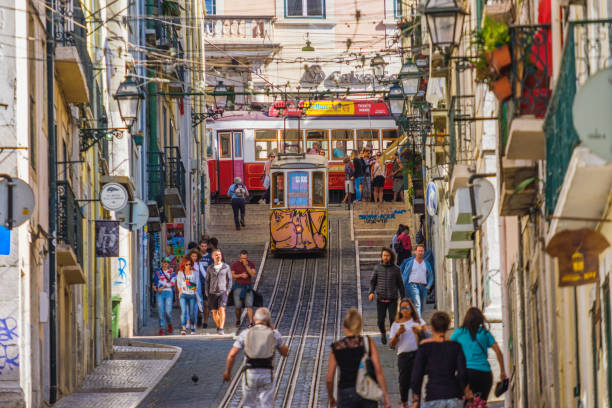
istockphoto -
A walk up the Butte Montmartre to see Sacré Coeur, enjoy the views of the city, and stroll around the little town full of artists is a must-do on any vacation to Paris. However, after a day of sightseeing, ascending the hill with its countless stairs might be difficult. So why not walk halfway up the hill from metro Anvers and then take the funicular the rest of the way? Originally built in 1900 as a steam-powered water-filled counterweight funicular train, this system quickly proved inefficient, and after two upgrades, today's funicular is capable of carrying approximately 2,000 riders per hour, as well as an impressive two million annual visitors, up to Sacré Coeur, the second most visited sight in Paris after Notre Dame.
The system is simply a funicular in name. The Montmartre Funicular is a relic of its previous design, in which its cars functioned in a counterbalanced, linked pair, constantly going in opposing directions in concert, thereby satisfying the definition of a funicular. The system presently employs two independently running cars that may individually ascend or descend on demand, so qualifying as a double inclined elevator, while the name funicular is retained in the title as a historical reference.
The 90-second journey up 118 feet, beside a 220-step stairway, one of the shortest on the high slope facing Paris, is especially beautiful in the snow. The Montmartre funicular is the best method to go to Sacre Coeur and Place du Tertre without devoting valuable energy to other Montmartre activities. You can see suburban Paris from the funicular as you ascend the slope and get a closer look as you descend the stairs. You may even witness Paris being painted a golden tint at sunset or the city lights come to life at nighttime if you time it perfectly. You wouldn't want to miss out on such Montmartre activities.
Location: Paris, France
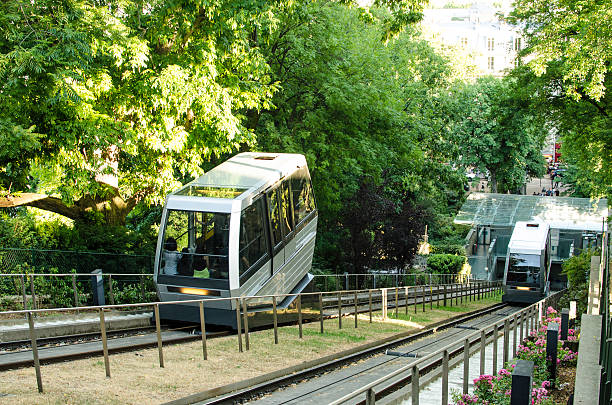
istockphoto 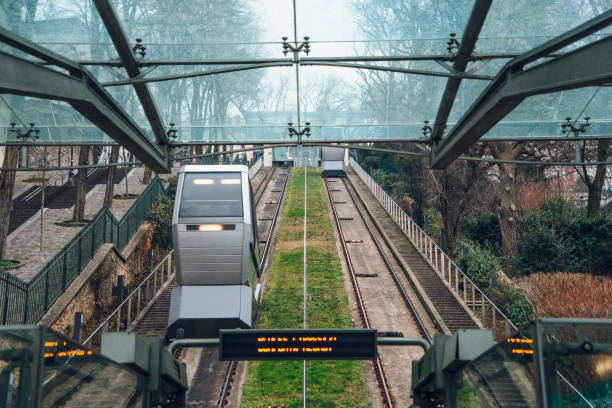
istockphoto -
When you want to climb up to the Buda Castle Hill from the river level in Adam Clarke Square, taking the Buda Hill Funicular is a nice and very inexpensive method to spare your legs a trek. Take a trip on a classic cable car! The Funicular, located at the Buda end of the Chain Bridge, takes only a few minutes to ride and provides a unique and breathtaking perspective over Budapest, the River Danube, and sites at the top of Castle Hill, such as the Fisherman's Bastion. You can even view Margaret Island on the left and the majestic Art Nouveau style Gresham Palace on the Pest side of the river from the top.
The Funicular, which connects the banks of the Danube to the Buda Castle, has been in operation since 1870. The project was initiated by Odon Szechenyi, son of politician Count Istvan Szechenyi. This was the second funicular railway in Europe at the time. After being entirely destroyed in a WWII bombing strike, the funicular had been methodically restored and rebuilt in a vintage design. In 1987, the Buda Castle Funicular was included to the list of UNESCO World Heritage Sites.
It now travels on a 95-meter length with a 50-meter elevation gain and has two tram carriages. The Buda Castle Funicular features two stations: one at the Buda end of the Chain Bridge and one on Castle Hill, between the Royal Palace and Sandor Palace. The Castle Tour & Funicular package lowers to the riverside level at the Funicular's top station to continue the guided tour on the Danube.
Location: Budapest, Hungary
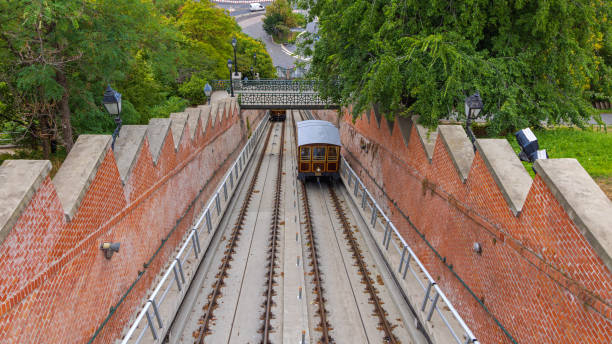
istockphoto 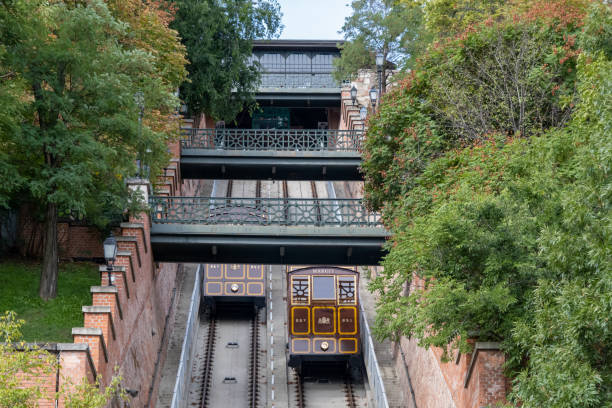
istockphoto -
Tünel, which translates as "tunnel", is one of Istanbul's subterranean funiculars. It connects the transit hub Karaköy, where trams, buses, and ferries converge, to the Galata Tower and the famed retail boulevard Istiklal Caddesi. The Tünel was established in 1875, making it the second oldest underground urban rail line in the world after London's Underground. The funicular rises 203 feet, with two cabins—one somewhat older and nicer than the other—moving in opposing directions and delivering around 12,000 people every day. You may either walk down to visit the Galata Tower or take the ancient tram down Istiklal Caddesi to Taksim Square. The initial rolling stock was two two-car wooden trains.
One vehicle was set aside for passengers, with its two classes separated into sections for men and women. The other vehicle was used to convey goods, livestock, and carts. Steam engines supplied motive power. The wooden carriages were replaced in 1971 with two electrified steel trains moving on pneumatic tires on concrete rails, thus it may be dubbed a rubber-tired funicular, comparable to the rubber-tyred metro. A new generation of rolling stock entered service in 2007. Each car can now accommodate 170 passengers and travel at a top speed of 22 km/h. The travel from top to bottom takes roughly 1.5 minutes, with a 3.5-minute wait. In 2021, the Tünel's first female driver was hired.
Location: Istanbul, Turkey
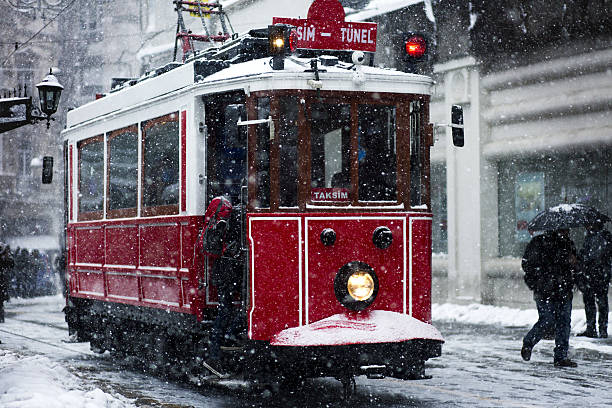
istockphoto 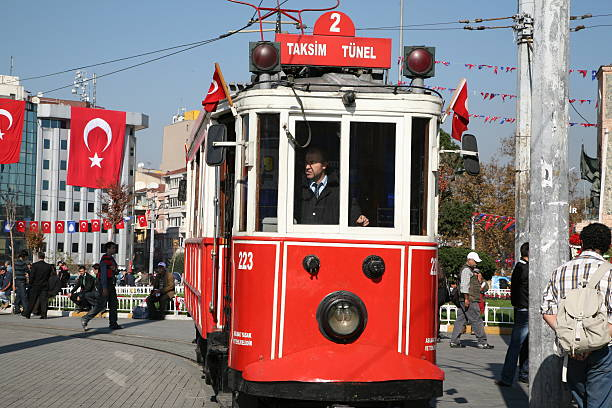
istockphoto -
The Zagreb funicular is unquestionably one of the most popular tourist attractions in the city. The world's shortest cable car, barely 66 meters long, has been carrying Zagreb residents between the Upper and Lower Towns for over a century. It first opened in 1890 and was powered by steam until 1934. It has retained its original appearance and structure until this day, which is why it is a protected cultural monument. The lower station is on Tomieva Street, which leads to Ilica, Zagreb's longest street, while the upper station is on the Upper Town's Strossmayer promenade, at the base of Lotrak Tower.
It is designated as a cultural monument since it has retained its original construction and appearance. It was originally steam-powered and occasionally required a little prodding. The wagons were separated into three sections. The front sections with the greatest views were reserved for first-class passengers. The center section was for the regular folks. The amusing explanation behind the funicular's amusing moniker "Zapinjaca" (Stucker). It's because passengers had to practically push the blocked wagons at times. Because the steam engines were unreliable, they were replaced in 1934 by electrical ones. The original engine components are on display at the Zagreb Technical Museum.
The funicular, which is 66 meters long and takes roughly a minute to ride, may not serve a meaningful purpose. You might be able to get there faster on foot. But take it just for fun! On top, you will get spectacular views of the entire city. The Zagreb Funicular has a hydraulic lift platform as well as an access ramp. As such, it is an excellent way for visitors with impairments to reach Upper Town.
Location: Zagreb, Croatia
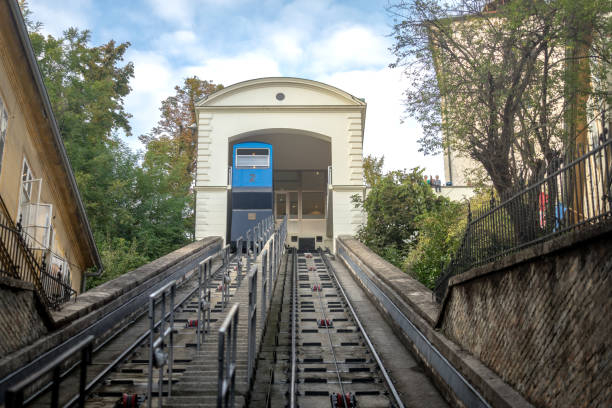
istockphoto 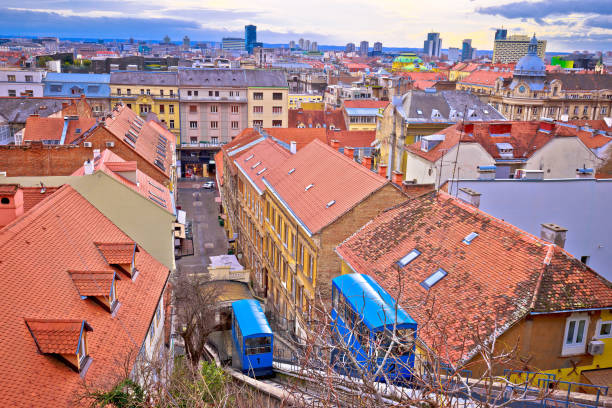
istockphoto -
When you want to visit two beautiful districts of Kiev on the top and bottom of a very high hill that gets quite treacherous in the winter snow, you'll be glad to know that they're linked by a really lovely funicular. The Kiev Funicular is a high slope train on Kyiv Hills that connects the historic Uppertown and the lower commercial area of Podil over the steep Volodymyrska Hill overlooking the Dnieper River. The Kyiv city community company Kyivpastrans operates the line, which has only two stations.
The funicular dating back to 1905 connects the historic, Parisian Uppertown with its magnificent churches and an arty street market with the young and hip Podil full of cafes and concept businesses. The 2.5-minute ride in one of two turquoise carriages powered by a pulley system provides magnificent views of the Dnieper River and the vast park on Volodymyrska Hill, which is worth visiting. A great case for walking, sliding, or riding down and up. The journey between the stations takes about 3 minutes.
The path runs from Uptown's Mykhailivska Square to Podil's Poshtova Square. The ticket price is similar to those of the other city-owned public transit options, 8 (about US$0.3 as of July 2018). The funicular transports 10,000-15,000 passengers per day and 2.8 million passengers per year. Originally created because trams couldn't travel the slope. Later, if the tram is the only mode of transportation, the funicular charge was included in the monthly ticket price.
Location: Kiev, Ukraine
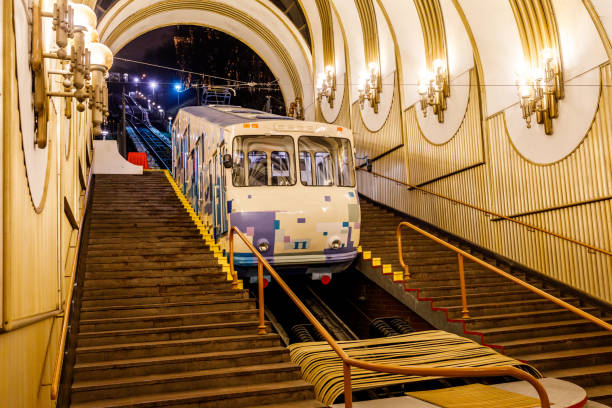
istockphoto 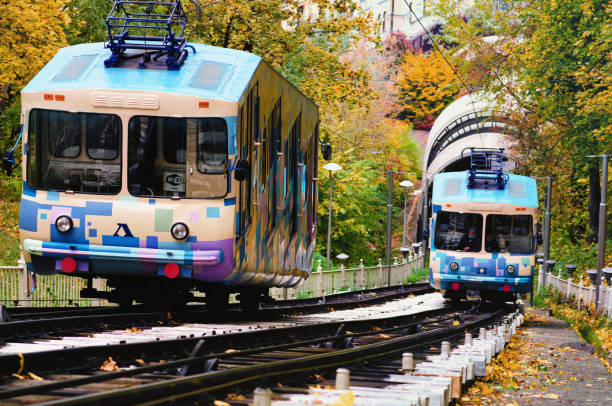
istockphoto -
The Funiculaire de Pau, sometimes known as the Pau Funicular, is a funicular train in the Pyrénées-Atlantiques département of southern France. It connects the Boulevard des Pyrénées, above the city center and the Château de Pau, to the Pau train station, below the Gave de Pau valley. The railway arrived in Pau in 1863, but it wasn't until 1885 that the idea of building a funicular was proposed. The decision to build the line was made in 1906, and the funicular began operation in 1908.
The line was closed from 1951 to 1954, and again in 1961, for equipment replacement. It was decommissioned in 1970 because to safety concerns and a lack of patronage. The town opted in 1978 to maintain the heritage infrastructure, refurbish it, and reopen it, with the line being fare-free. Additional inspections and modifications occurred in 1995, 2006, and 2010. During the most recent restorations, improvements were made to make the line more accessible to people with limited mobility. The current cottages were built in 1961. The funicular is free to use and runs from 06:15 to 21:00 on weekdays and in the afternoons on weekends and holidays. It is run by the city council, and carries some 500,000 passengers a year, with a monthly peak of 50,000 passengers and a daily average of 1,500 people.
Location: Pau, France
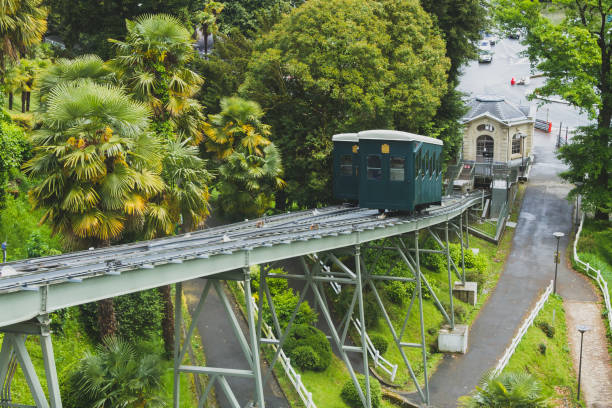
istockphoto 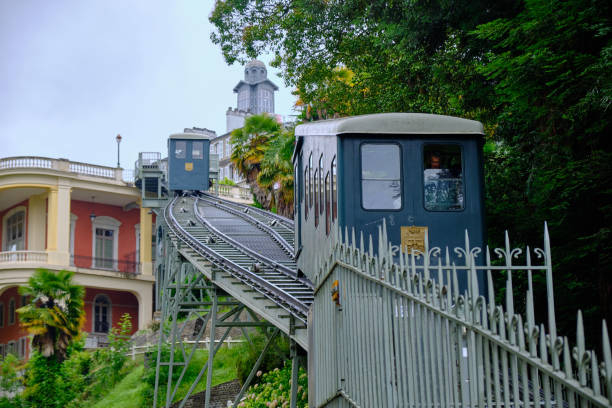
istockphoto -
The contemporary Flame Towers that tower above the city and give a dazzling show at night are a terrific way to reach the summit of Azerbaijan's history, which dates back many millennia. The funicular—the only one in Azerbaijan—is clean, swift, and efficient, with amazing views across the bay and the Caspian Sea. It was built in 1960 and received a comprehensive repair in 2012. The glass stations and four-minute ride are worth seeing on their own but wait till you come to the Flame Towers and enjoy the panoramic views from the park, which includes the Shahidlar Monument. It's the greatest restaurant in town. Alish Lambaranski spearheaded the construction of the funicular. Since 2006, Tofig Ismayilov has served as the funicular's director. There are 11 people working on the funicular. It employed Kharkiv-made coaches during the Soviet era.
The Funicular, which is really a cliff train, connects Martyrs' Lane and Neftchilar Avenue, two of Baku's most important attractions. This attraction is also significant since it is Azerbaijan's first and only funicular system, with its maiden ride taking place in 1960. It has a total length of 455 meters and a top speed of 8.2 feet per second. However, the transportation system has been chastised for its lack of punctuality.
Location: Baku, Azerbaijan
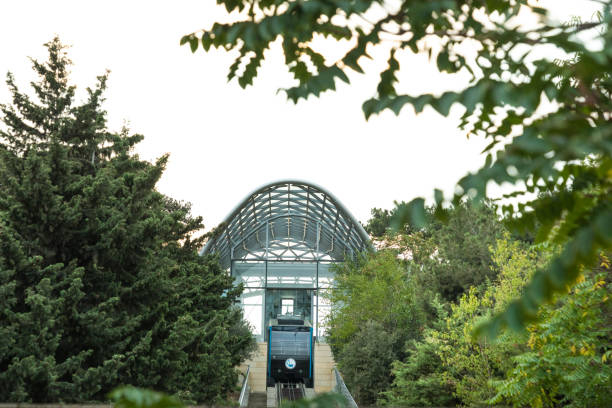
istockphoto 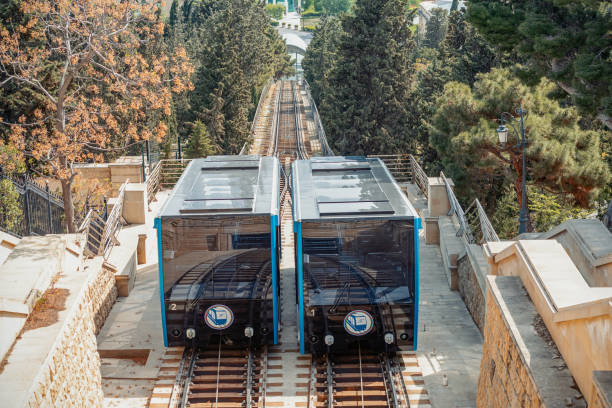
istockphoto -
The Polybahn, sometimes known as the UBS Polybahn, is a funicular train located in the Swiss city of Zürich. The line connects the Central Square to the terrace by the main building of ETH Zürich, historically known as Eidgenössisches Polytechnikum and from which the railway gets its name. The line had formerly been known as the SBG Polybahn and the Zürichbergbahn. The financial firm UBS AG owns the line, which is managed on their behalf by the municipal transport operator Verkehrsbetriebe Zürich. Polybahn funicular rail, which has been in service since 1889, delivers around 50 passengers every two minutes in both directions. And the path is exactly the same as when it initially started.
Initially, the service was powered by water-weights, like in Bern and Freiburg, but in Zurich, the service was shortly to be powered by electricity. The Polybahn is one of two funiculars in Zürich, the other being the Rigiblick on the city's northern outskirts. Furthermore, the city's Dolderbahn rack train was originally a funicular until it was converted to rack operation in the 1970s.
The railway was extensively reconstructed in 1996. The haulage system was completely overhauled and mechanized, and the old three-rail tracks were replaced with contemporary two-rail tracks. The railway reopened on October 21, 1996, and is currently known as the UBS Polybahn, reflecting the rebranding of the owning banking firm as UBS AG (in 1998). The line established a new record in 1998, with over 2 million passengers. On 30 May 2021 the Polybahn was closed for refurbishment, with the cars being removed by crane. The Polybahn reopened on 17 September 2021.
Location: Zurich, Switzerland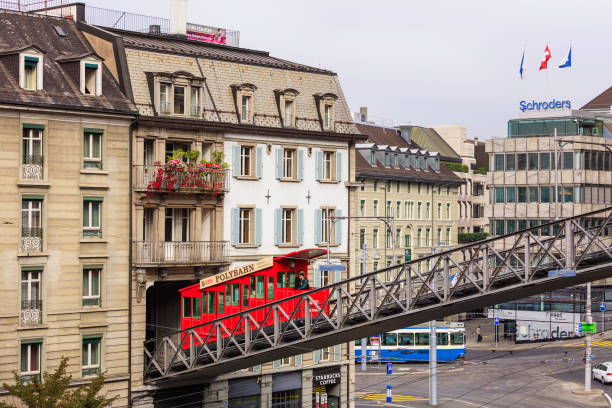
pinterest.fr 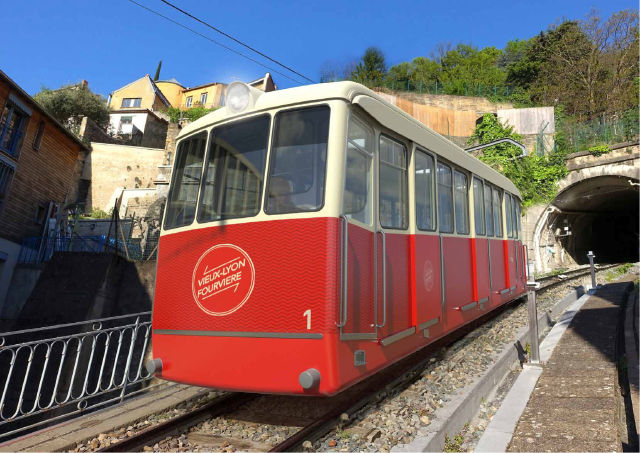
lyonmag.com -
The Bom Jesus funicular is a funicular in the town of Bom Jesus do Monte, Braga, Portugal. Niklaus Riggenbach built the funicular in 1882, making it the oldest in the Iberian Peninsula. It is the world's oldest funicular, operating by water counterbalancing, pouring water into the car at the top of the hill, which weights it down and causes it to descend, while dragging the lighter, emptied vehicle up the hill, where the process begins all over again.
The suspension system consists of four helical shock absorbers with no dampers and hinged spiral-spring stop brakes. Each tram can seat 30 passengers, with a total capacity of 38 potential over six bunks (seating five passengers), eight standing, and the conductor. Each cabin had two water tanks, the biggest with a capacity of 5,850 litres that served as a counterbalance and supported the refrigeration circuit for the brakes, and the smaller with a capacity of 216 litres that served as a support for the rear brakes. Both trams operate in opposing directions, arriving at separate stops at the same time.
It is the world's oldest funicular, moving by water counterbalancing, pouring water into the car at the top of the hill, weighting it down so it drops to the bottom, while dragging the lighter, emptied vehicle up the hill, where the process begins again: the journey takes between 2.4 and 4 minutes. The base terminal is a rectangular stop with three bodies, the center being higher than the lateral wings, plastered and painted white, and granite corners, cornices, and frames. The main façade is somewhat expanded and elevated by several steps to wooden entry and exit entrances and their divisions, with single doors defining the lateral facades. The interior is taken up by the tram access platform. The higher station included lateral platforms with cobbled slopes and access to the train line by a double granite stairway that diverged at the top.
Location: Braga, Portugal
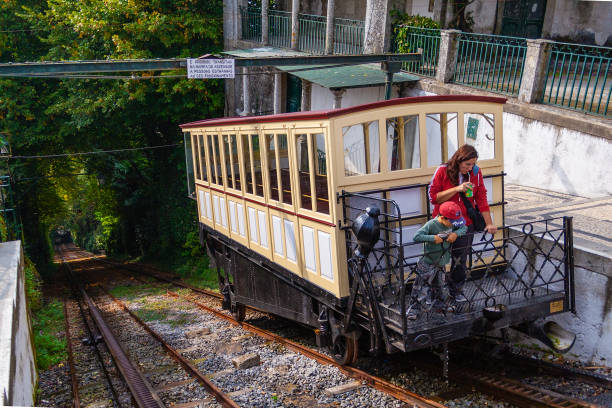
istockphoto 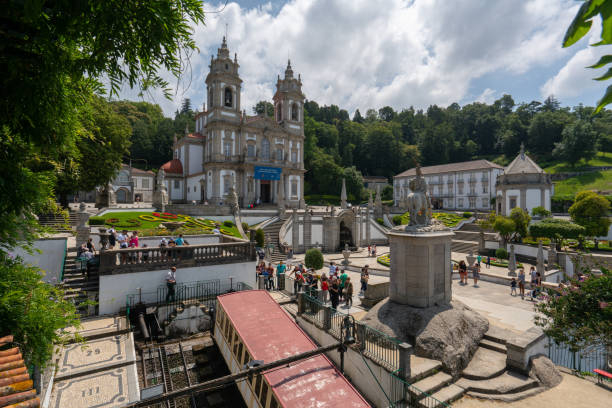
istockphoto -
The Funicolare Cassarate - Monte Brè funicular train is located in the Swiss canton of Ticino, in the city of Lugano. The railway connects a lower station in Cassarate, a Lugano suburb, to an upper station at the peak of Monte Brè. Views of the city and Lake Lugano may be had from the summit. Since 1912, a cable railway has transported visitors from Cassarate to Mount Bré (933 meters above sea level), a location that offers many opportunities to visitors, including a large, well-equipped picnic area where food can be grilled, walks suitable for families with small children, and more difficult mountain hikes.
During the summer months of June and August, the cable car is open until 11 p.m. on Fridays and Saturdays. The funicular is divided into two distinct and independent portions. The initial portion is only 196 metres long and connects the Cassarate and Suvigliana stations. Passengers must cross the road at Suvigliana to reach the lower station of the second, and substantially longer, segment. This 1,403-metre-long segment is quite sinuous, with intermediate stops at Albonago, Aldesago, and Brè Villaggio. The Monte Brè funicular is one of three funiculars in service in the Lugano region. The other two are the Monte San Salvatore funicular, which ascends Monte San Salvatore on the other side of town, and the Lugano Città-Stazione funicular, which connects the city center with the train station.
At the very least, stroll down from the funicular station to Ristorante Vetta, which boasts a panoramic patio facing Lake Lugano. If you wish to stretch your legs, try this short loop at the summit of Monte Brè that takes you to another viewpoint to the east. The majority of the trek is in the woods with plenty of steps, so it's not spectacular. However, the vantage position is appealing.
Location: Lugano, Switzerland
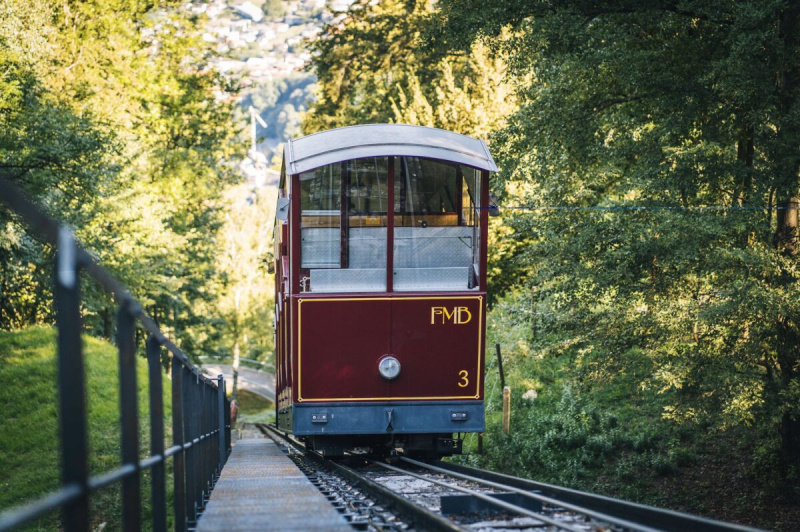
montebre.ch 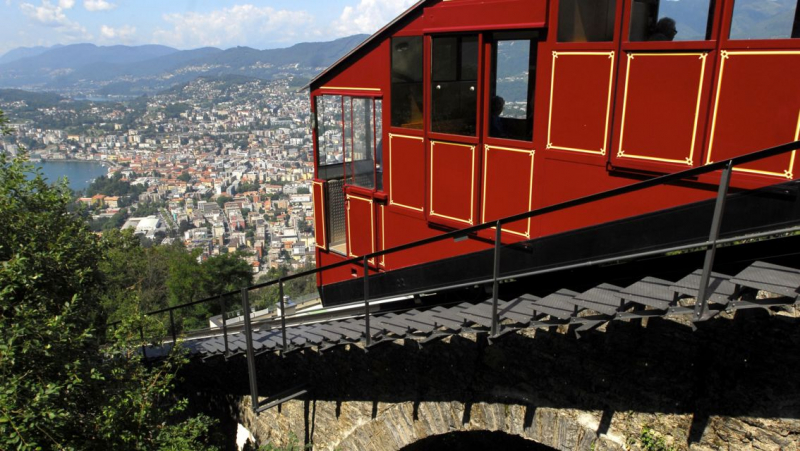
ticinoweekend.ch -
Take the funicular railway to the summit of Mount Fløyen for one of Bergen's most memorable vistas. It's difficult to read a story on Bergen without seeing an aerial view of the city. Many of these are from the summit of Mount Fløyen. It has become an iconic view of the city and is a sight to see, day or night, rain or shine. To reach the summit of Mount Fløyen, you may climb up steep roads or paths that are properly marked. However, most visitors choose to utilize the Fløibanen funicular train. It is also popular with locals who are traveling into the highlands. Mount Fløyenis the beginning point for several treks, including one of Bergen's top climbs.
Since its inception in 1918, the Fløibanen has transported over 50 million people to and from Mount Fløyen. Let's take a deeper look, whether you're planning a trip or simply doing some sofa-tourism. It's not difficult to locate the funicular. The striking white station building is just a few feet from from Bergen's fish market and the well-known Bryggen district. Trains travel regularly throughout the day and are typically packed with British, American, and German visitors.
The funicular trains hold around 60 people and run every 15 minutes throughout the day. The frequency is lowered to every half-hour in the early morning and late evening. However, during peak hours, additional services are provided. At the time of writing, single tickets cost 50 kroner and return tickets cost 100 kroner. They may be purchased from the counter located just inside the white structure seen in the above image. Cash or credit cards are accepted, and if you have any queries, the cashier will of course understand English. If you want, you may save money by purchasing your ticket online. This means you don't have to queue at the ticket office, but you still have to wait for a train.
Location: Bergen, Norway
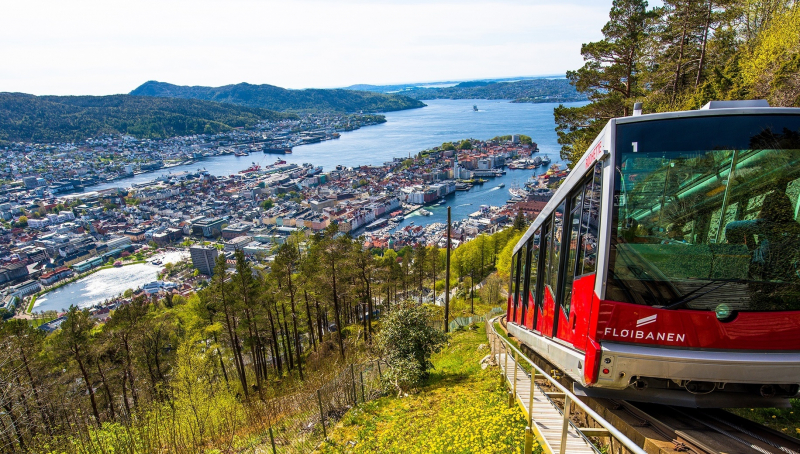
floyen.no 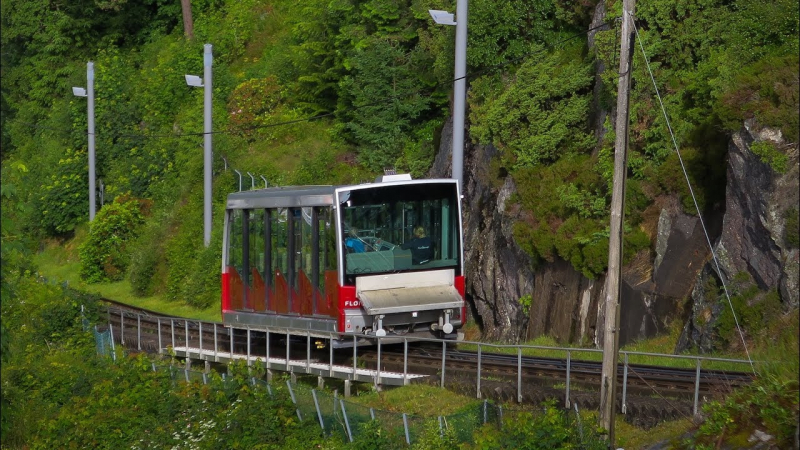
floyen.no














